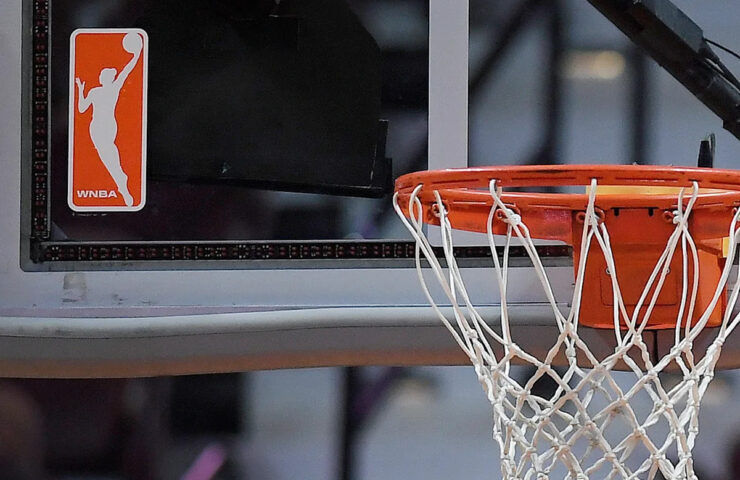
How WNBA expansion could affect CBA negotiations, season schedules, conferences
MINNEAPOLIS — Cheryl Reeve is intimately familiar with the history of the Detroit Shock. She won two WNBA championships in four seasons as an assistant and served as the franchise’s final general manager before it ceased operations and relocated to Tulsa. She also had stints with the shuttered Charlotte and Cleveland franchises to begin her professional career.
“What I hope is that both Detroit and Cleveland learned a lot about their experiences the first time around,” Reeve, the Minnesota Lynx head coach and general manager, said on Tuesday before their 74-59 Commissioner’s Cup loss. “And I anticipate an overall more committed experience, because that’s what’s necessary. Anything short of that, it won’t be as successful as it should be.”
Advertisement
Players who spoke about the expansion news this week largely agreed and voiced concern that while the league adds franchises at its discretion, it is ignoring active ownership groups they believe are not fully committed and are failing to support their players.
“I think it’s awesome the league is expanding,” Fever guard Sophie Cunningham said. “We’re having new fans and people are interested, but, again, does it make sense? Can you take care of the people who are in the league now? Where are we going to be in 5 or 10 years? What’s that going to look like?
Those inquiries and concerns will play into collective bargaining agreement (CBA) negotiations that remain ongoing between the league and players. Considering Sabally called the latest proposal from the league a “slap in the face” on Tuesday when asked about expansion, players aren’t pleased with the direction of those talks.
The sides will meet at All-Star weekend in Indianapolis later this month. Commissioner Cathy Engelbert said on Monday she remained in communication with union executive director Terri Carmichael Jackson about the expansion, telling her they were “getting ready to do something bigger than we thought.” But waiting until after negotiations for expansion bid announcements wasn’t viable.
Advertisement
“I don’t want to over-vector on how much CBA played into this or timing,” Engelbert told a group of reporters after the announcement on Monday. “This is the right thing to do for this league at this time.”
Adding six teams in six years will have a natural effect on the structure of the regular season with a record-high number of teams. And the news could also impact how and what players value beyond their No. 1 priority of higher salaries.
“We’re going to get what we’re worth, and we’re not settling for anything,” Cunningham said on Tuesday. “That’s a big message across the league, that we’re not going to settle. And so that’s on the commissioner and the league side to figure out what you’re going to do.”
How will it impact the schedule?
The CBA outlines limits on the number of regular-season games allowed in a season. The league went up to the maximum 44 this year, growing from 32 in 2021. With more teams in the mix and TV dollars on the mind, it’s likely to go up again. More games mean more revenue for the league and franchises.
Advertisement
That’s already a flash point. The WNBA instituting a league-wide charter program that players want codified in the deal helped with travel issues, but concerns remain. Players consistently speak out about the structure of the schedule, condensed games and the impact of prioritization that requires them to report to their WNBA teams on time.
The league is playing in the same general footprint of the calendar as when it had 32 games. A widening footprint beyond October would limit their opportunities to go play overseas, though higher salaries should negate some of that anyway. The issue is also intertwined with roster sizes that players want to see grow for the health and safety of players.
Lynx guard Bridget Carleton noted that while the schedule is similar to the NBA, that league has larger rosters and the ability to call someone up from a G-League affiliate. They have pushed publicly for larger roster sizes over team expansion, arguing it would add the same amount of total roster spots.
Could conferences return?
The league could also return to focusing more rigidly on its conferences. A decade ago, it shifted away from the conference postseason format to better showcase its two best teams in the Finals. But a record 18 teams may lend itself to better scheduling, a more structured conference-based postseason and therefore those rivalries Engelbert desires. Right now, the conferences are inconsequential outside of the Commissioner’s Cup.
Advertisement
To do so would take some creativity. As Cunningham pointed out Tuesday, there are a lack of teams in the south and central parts of the U.S. Detroit, Cleveland and Toronto are regional around the Great Lakes with proximity to Indiana as well, while Philadelphia is deep into the East Coast corridor. Only Portland naturally fits into the Western Conference.
The push toward rivalries and individual talents is a years-long approach by the league to boost interest, viewership and intrigue, which has sometimes rankled players.
“We were marketing the league as this group of 144, 12 teams, we’re an entity,” WNBA chief marketing officer Phil Cook told Yahoo Sports at the 2024 WNBA Draft. “And now we’re starting to act like a real sports league and promote the rivalry.”
What will expansion drafts entail?
The current CBA loosely details the expansion draft in the CBA, allowing the WNBA to “decide in its discretion” to have existing teams make players available for assignment to any expansion team. It does exclude unrestricted free agents, unless they can be cored by the expansion team.
Advertisement
That will be tricky this offseason since players who aren’t on rookie-scale deals will become free agents. Knowing salaries would rise, players didn’t sign past 2025.
“Every year there’s going to be an expansion draft coming up, which is hard to fathom especially with the CBA in the works and not knowing what everything is going to look like,” Lynx guard Bridget Carleton said.
But there are also three more expansion drafts to come, and with the CBA up, it’s an opportunity for players to negotiate terms if they have other ideas. The three new teams are staggered over several years because the league “didn’t want to degrade the quality of the game by bringing too many roster spots too soon,” Engelbert said on Monday.
The last era of rapid expansion came in the first years of the league. Four teams entered in 2000 and the design of the expansion draft made it difficult to build a competitive roster. The league didn’t announce specifics around the Golden State Valkyries selection process until late 2024.
Advertisement
Can the league sustain its growth?
The league is in a no-win situation in some respects. Limiting expansion would draw rebukes the same way their rapid expansion plans have this week. The most important aspect for the league, teams and players is that all ownership groups buy in now, as well as later, when leaner years inevitably land.
Players already want to see terms in the CBA that require ownership groups to provide professional-level practice facilities and accommodations. That arms race is in its final stages, but certain teams still lag behind. Might players look to add more verbiage in the agreement to ensure organizations are keeping WNBA teams a focal point, rather than a side hobby to NBA franchises?
Advertisement
Reeve said on Tuesday she is a “big believer” in the NBA/WNBA partnerships (the Lynx and Timberwolves share an ownership group), but wants it to evolve out of the way it’s been structured in the past.
“The ownership groups are going to have to look at, how do you maximize revenue?” Reeve said. “And it isn’t because you’re sharing sales staffs or you’re not getting behind the sponsorship dollars [for the WNBA team].”
She said she doesn’t want to see the same issues of the NCAA in “missing the opportunity for women” while laser-focusing on the men’s game.
